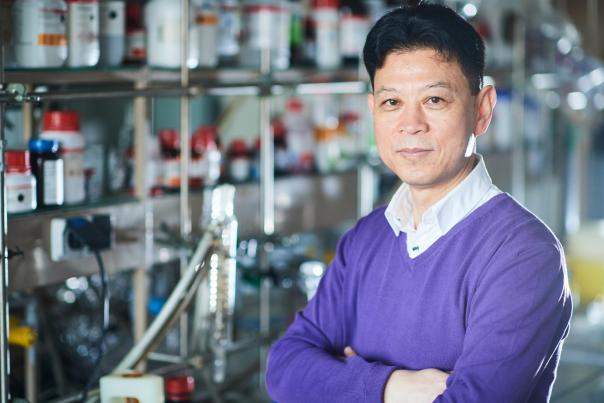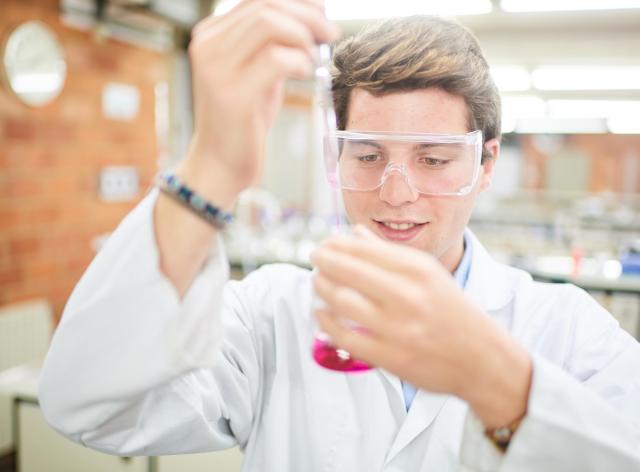Our research focuses on the design, synthesis, property studies and molecular engineering of nanostructures, highly organized and hierarchical self-assembled porous materials, bio-integrated and bio-inspired living materials, including sheet-like materials through immobilization of living organisms and biomaterials for catalysis, photocatalysis, CO2 conversion and water separation, energy storage and conversion, artificial photosynthesis, nanotechnology, biotechnology, information technology, cell therapy and biomedical applications.
Promoteur (PI) | Bao Lian Su
Bao Lian SU est également membre de l'Institut NISM.

Research projects
- INTERREG FWVL CLEANAIRBOUW
- INTERREG FWVL DEPOLLUTAIR
- BATFACTORY
- WBI-MOST MATSTOCKNRJ
- ARC ENCAPCELRAPY
- ...
Research areas
Photocatalysis by slow photons
Sunlight is widely recognized as one of the most valuable renewable energy sources for the future. However, the development of solar energy technologies is seriously hampered by the low energy conversion efficiencies due to the low optical absorption coefficients and low quantum conversion efficiency of current generation materials. Considerable effort has been devoted to finding new strategies to improve the use of solar energy. Various chemical and physical strategies have been used to extend the spectral range or increase the conversion efficiency of materials, with very promising results. However, these methods are beginning to reach their limits. So what's the next big concept that could be used effectively to improve light harvesting? Although discovered many years ago, the slow photon effect, a manifestation of the control of light propagation through photonic structures, has been largely overlooked. Our pioneering research reveals that the photoreactivity of materials can be significantly enhanced by exploiting slow photons. Successful implementation of this strategy should open up a highly promising path for a wide range of light energy conversion technologies.
Predictive chemistry for the synthesis of hierarchical porosity materials
Hierarchy of materials at the porosity, structure, morphology and component level is essential to achieve high performance in all kinds of applications.
Plants and animals possess analogous tissues containing hierarchical networks with pore sizes decreasing at several scales and terminating in units of invariable size such as plant stems, leaf veins and vascular and respiratory systems. Natural hierarchical materials feature hierarchical branching and precise diameter ratios to connect pores at multiple scales, from macro to micro, and have evolved to maximize mass transport and reaction rates. The underlying physical principles of this optimized hierarchical design are embodied in Murray's Law. However, we have yet to realize the advantage of mimicking nature's Murray networks in synthetic materials due to the challenges of fabricating vascularized structures. Is it possible to establish such material design principles to achieve predictive and optimized functions?
In our laboratory, we emulate optimal natural systems following a general rule developed by revisiting Murray's Law, which evolved in natural hierarchical systems and predictably controls functionality and porosity at every length scale of materials, as in plant stems, leaf veins and vascular and respiratory systems. These bio-inspired Murray material mimics could enable dramatically improved mass exchange and transfer in liquid-solid, gas-solid and electrochemical reactions, and could feature enhanced performance in photocatalysis, catalysis and energy storage.
Bioencapsulation for energy, environment and healthcare
Living cells can be seen as highly efficient molecular motors enclosed in space, yet remaining highly fragile. By combining cells with porous materials in the right way, it is possible to design new technologies for living hybrid materials. Bioencapsulation enables cells to be protected from harsh environments and to control their environment as well as their concentration. environment as well as their concentration. This combination ultimately produces a device that can be oriented to drive the desired biochemical reactions. These functional living materials hold great promise for the development of new, environmentally-friendly processes. These hybrid systems would enable renewable resources (i.e. solar energy) to be used more widely and more efficiently to produce a wide range of chemicals. Encapsulated cell technology can pave the way for the design of various other types of bioactive materials, such as cleaning systems, biosensors and artificial organs. In our laboratory, a pioneer in this field, our research focuses on the encapsulation of micro-organisms, photosynthetic organelles, plant cells and animal cells.
Composition of the research team
Promoter (PI)
Bao-Lian SU is also a member of the NISM Institute.
Other team members
Post-doctoral researchers
Tarek Barakat, Laroussi Chaabane, Amanda Kale, Hongtao Qu and Yuchi Zhang
Doctoral students
Jun Chen, Louis Garin, Marvin Laboureur, Jing Li, Maxime Mathieu, Zhonghao Miao, Patrick Sanglier, Andrei Tchernichev, Guanying Wang, Yuanguo Wu, Liuxi Yang, Pengyao Yu, Xikun Zhang, Runtian Zheng


